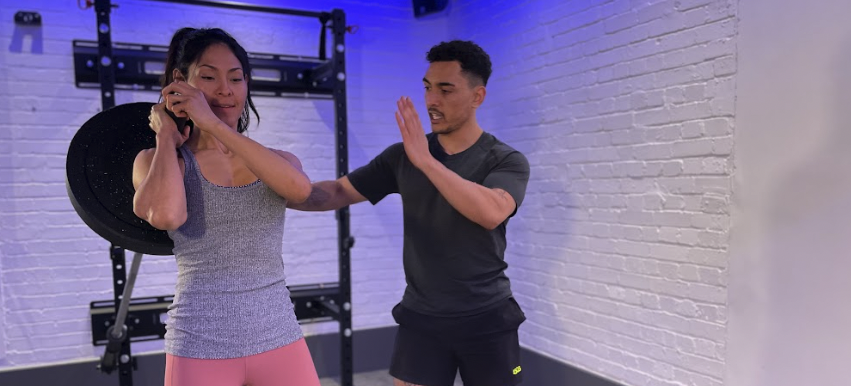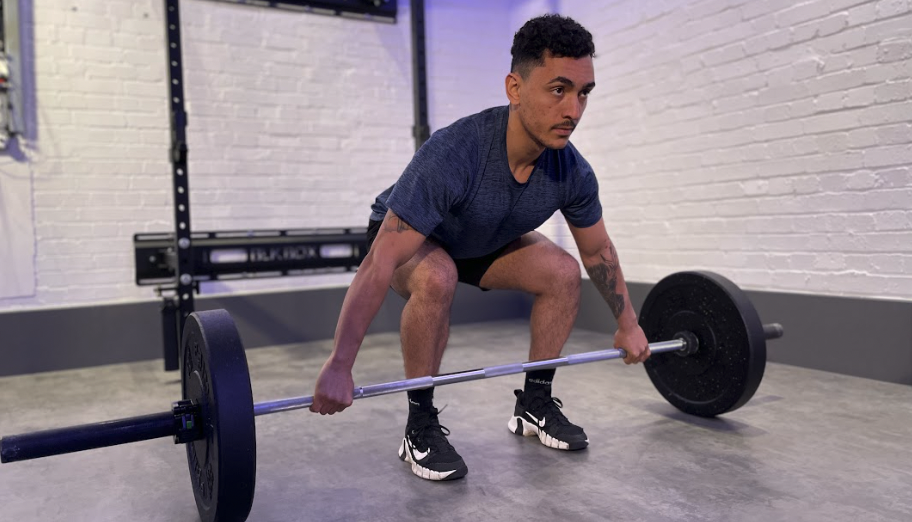Whether or not someone should be lifting big weights is a question that a lot of trainers get asked.
In this article I will run through exactly what ‘heavy’ lifting consists of (and it’s not as scary as you think!)
Everyone’s heavy is different. There are many factors that can determine what is heavy but also everyone’s training motivation and purpose is different.
Is it a good idea to lift heavier weights?
It’s always a good idea to have some form of strength training in your weekly routine.

Strength training is beneficial for many reasons including building muscle tone, reducing chances of injuries and improving general health and wellbeing. Without functional strength our day to day lives can be affected quite drastically. Lack of, or poor strength can lead to postural problems, back pain, knee pain and as we get older a big reduction in muscle tone, in turn leading to more injuries and less movement. A vicious circle that is very hard to get out of.
However ‘heavy’ weights are very individual and very subjective. We are all different. We all have very different strengths, weaknesses, limb lengths and training history. So one person’s strength session can look very different to someone else’s.
Also using resistance machines compared to free weights will also alter how much someone lifts in a session. The fundamental difference between machines and free weights is that resistance machines follow a fixed pattern of motion. You’ve got no control over the direction or angle of the movement like you do with free weights. It’s fixed, and you’ve got to follow it.
Resistance machines support your body, and you don’t need to stabilise yourself as much, whereas free weight exercises require you to engage stabiliser muscles like your core to perform the exercise. Resistance machines offer more isolated exercises where you can better target a single muscle group- Using the free weights often delivers more compound exercises that engage more muscle groups.
You can often lift heavier weights on the machines than with free weights because of this and resistance machines carry less risk of injury and encourage correct form.
How much weight should I lift?
When it comes to lifting heavier weights, this is very individual and subjective to what individually we deem to be ‘heavier’. Using a 10kg dumbbell for Goblet Squats may be one person’s 80% of max, whereas to someone else, 10x that may be their 80% max for a barbell back squat.

How much you lift very much depends on your training age (how long you’ve been strength training for), your injury history, the exercise you are doing, the equipment you are using and also your technique and ability to perform certain exercises.
Working off of a percentage of your own 1 rep max (RM) is a very useful way for strength training purposefully without worrying if you’re lifting too light. Depending on what you want to improve will depend on which percentage you work at.
To improve muscular strength, you should lift a lower number of reps (typically 6–8) at 60–80% of your 1RM; to improve muscular endurance, lift a higher number of reps (12–15) using about 50% of your 1RM. If improving speed and power is your goal then 3-4 reps at 90% of your 1RM will be ideal.
What are some benefits of lifting heavy weights?
The benefits of lifting heavy weights are endless.Not just physiological by psychological as well.
A lot of people start out their new workout journey with physique goals. To lose body fat or increase muscle mass. However as time goes on these can change to performance goals. Wanting to lift a certain amount of weight on a specific exercise.
Trying to lift 2x bodyweight on hip thrusts or body weight on back squats. This can change someone’s mindset to a more internal form of motivation leading to an increase in adherence to training sessions and also diet and a healthy lifestyle in general outside of the gym. This then becomes a cycle of enjoyment and purposeful training. Training for improvement rather than because you want to change something you don’t like about yourself.

Lifting heavier weights and strength training in general, whether that be by using resistance machines, kettlebells, dumbbells, resistance bands or barbells, all contribute to a stronger, healthier body. Increased muscle tone, an increase in metabolism, reduced change of injury, better posture leading to reduced/no back or knee pain. No more niggles or irritating pains that just don’t seem to go away and appear at the most inconvenient times.
The ‘heavy’ part of lifting is subjective, but the results are global. As we get older and muscle tone reduces unfortunately this can lead to needing surgery for certain injuries, chronic or acute. This is what we want to avoid at all costs. Surgery can lead to reduced movement and mobility for quite some time. It can also lead to reduced motivation when it comes to exercise. If we can prevent injury rather than rehab injury, we will be in a much stronger position going through life.
Will lifting heavy weights make me ‘ripped’?
The simple answer is no. Just because you start to lift weights doesn’t mean you will accidentally become Mr or Ms Olympia. The same as if you learn to drive and accidentally become an F1 driver. It’s not going to happen. Unless that is your goal and then you will need specialist coaching.
It is true that strength training can elicit muscle hypertrophy leading to size increase, however in the first few weeks of strength training it is the nervous system that mainly sees an improvement. An increase in the nervous system response results in more motor unit recruitment and makes you stronger because the brain tells the muscle to recruit more neurons.
Women also won’t ‘bulk up’ like men as they have different hormone profiles. Men have more testosterone which promotes muscle growth. For women, both fortunately and unfortunately, their hormone profile allows them to tone without getting bulky, but also deters them from losing all the fat they may desire as easily as men. A clean diet will promote this wanted reduction in body fat %.
What are some examples of heavy lifting exercises?
‘Heavy Lifting’ exercises are usually referred to as the big compound exercises. Barbell Squats, Deadlifts, Bench Press, Pull Ups etc. However these are advanced exercises. They’re not advanced movements though.

Start by learning the correct technique and movement patterning either just bodyweight or with resistance bands or kettlebells/dumbbells. Once you have nailed the technique you can start to progressively overload them, eventually working up to your 80% of 1RM.
Back squats – start with box squats or goblet squats
Deadlifts – Start by learning the hinge pattern with hip thrusts or romanian deadlifts
Bench press – Start with dumbbell floor press
Pull Ups – Start with the lat pulldown machine or some resistance band assisted pull ups. Even just hanging off of a pull up bar will help here.
Interested in hearing more about lifting and strength training? Why not contact us!
